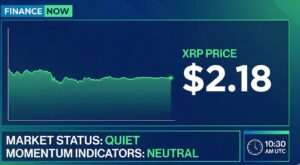Web 3 has gotten the attention of many global stakeholders in recent years. This is unsurprising, as Web 3 has been touted as the next big thing for the internet ecosystem. Many companies are preparing for the emergence of Web 3 and the numerous benefits it has to offer.
Today, many companies have secured a place in the Web 3 market. Companies like Spotify, Meta, Amazon, and Coinbase have started to invest in the Web 3 ecosystem. However, despite the significant benefits of Web 3, it is still a relatively new innovation. Thus, it needs some connection with the traditional financial system to scale effectively.
What Exactly is Web 3?
The internet, or the “World Wide Web” we all know today, is a product of several iterations. So far, we have had Web 2.0 and Web 1.0. Web 1.0 was primarily characterized by static pages. During this era, the concept of the internet was largely new to most users, and content creation was minimal. Web 1.0 was mainly deployed as a “read-only” web version. Thus, vital features like controls and visuals were unavailable. It also lacked interactive applications.
However, Web 2.0 was a significant improvement from the first iteration. It introduced revolutionary features like interactivity and easy usage. It also focused on the experience of the end-user and supported user-generated content. These features are instrumental to the birth of
and other internet communities. Web 2.0 is in use today.
Web 3.0 is an entirely different ballgame. The previous internet iterations have mostly been centralized. However, Web 3.0 promises to create a more advanced web by integrating technologies like Artificial Intelligence and blockchain. One of the most important features of Web 3.0 is its decentralization. Once launched, Web 3.0 will achieve decentralization through innovations like decentralized finance (DeFi) and Decentralized Autonomous Organizations (DAOs).
However, many applications that will be deployed under Web 3.0 need traditional finance. One such application is Decentralized Finance (DeFi). However, there are existing gaps between DeFi and traditional financial institutions.
Why DeFi Needs Traditional Finance
DeFi is undoubtedly a revolutionary concept. It increases access to financial services by enabling users to conduct transactions directly without intermediaries. One of the primary financial elements of Web 3.0 is DeFi. Since Web 3.0 intends to be fully decentralized, it needs to operate on an equally decentralized financial system which is, in this case, DeFi.
However, DeFi must collaborate with traditional finance to increase adoption. This is because DeFi currently has specific shortcomings that make transactions difficult for users. For instance, DeFi rarely complies with regulatory requirements. However, traditional finance has the requisite compliant infrastructure to put the minds of Web 3 or DeFi users at rest.
Bridging the Gap
To fully bridge the gap between Web 3 and traditional finance, developers must introduce the provisions or offerings of the traditional finance sector into the Web 3.0 space. Bridging the gap between Web 3 and traditional finance will allow users to access traditional financial services through DeFi channels. It will also make transactions easier on the web.
Bottomline
There is no doubt that Web 3.0 is revolutionary. However, its ability to fully deliver value depends on its effective collaboration with traditional finance.




























